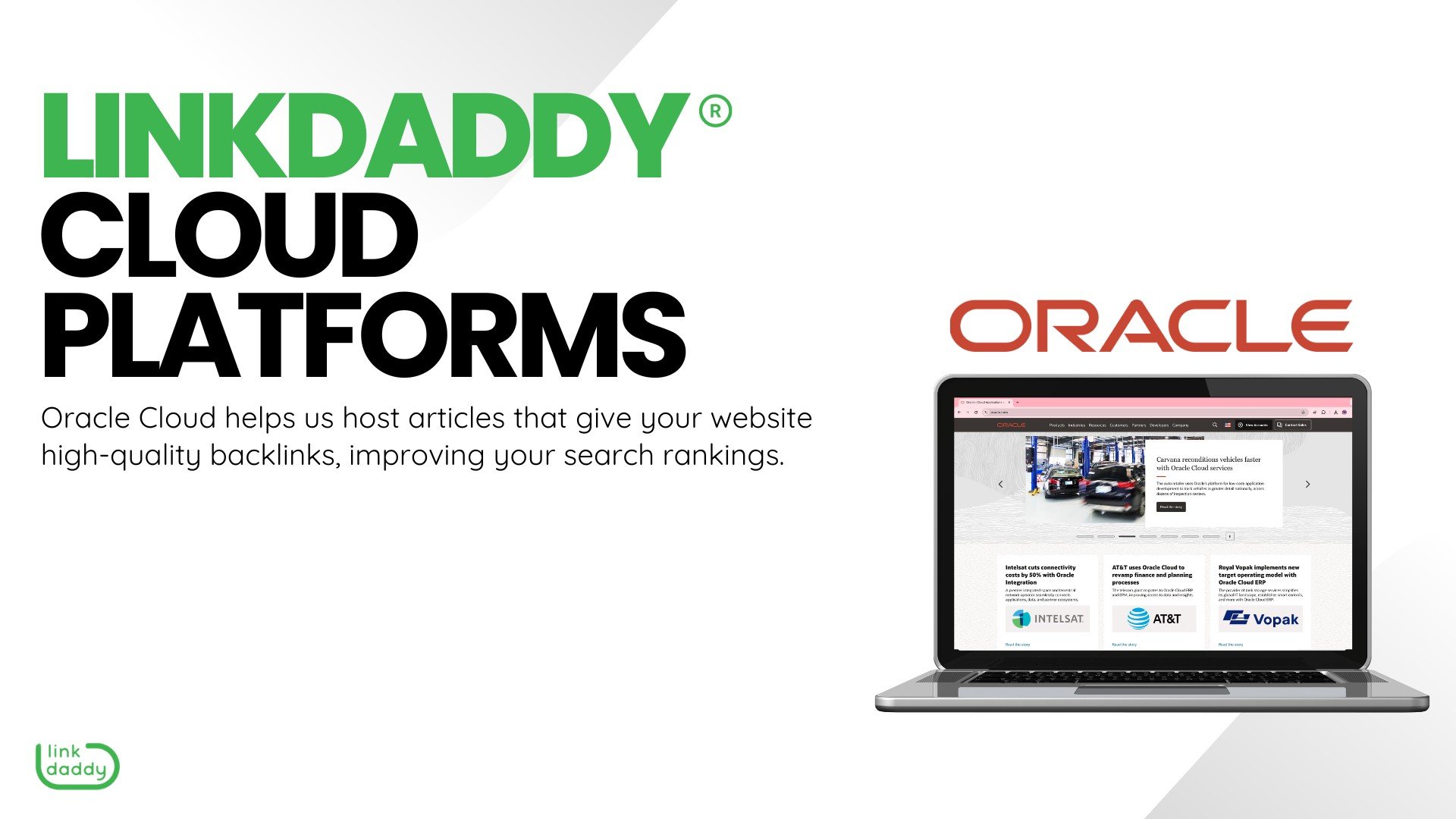A Practical Method to Applying Cloud Services for Maximum ROI

Assessing Current Infrastructure
When evaluating the usefulness of applying cloud services for optimum return on investment, the initial step includes analyzing the current facilities in position. linkdaddy cloud services press release. Recognizing the existing hardware, software, network abilities, and storage space systems is important to determine the compatibility and assimilation needs for migrating to the cloud
Analysis of the present infrastructure entails carrying out a comprehensive audit to determine strengths, weak points, and possible areas for enhancement. It is essential to examine variables such as server capacity, information safety and security measures, redundancy procedures, and scalability alternatives. By getting a clear understanding of the current state of the framework, organizations can properly plan and plan the transition to cloud services.
Furthermore, assessing the present framework allows businesses to align their cloud adoption method with their specific demands and purposes. This assessment gives valuable insights right into enhancing resource application, enhancing efficiency, and making certain smooth integration with cloud options. Inevitably, a complete assessment of the existing framework lays the foundation for an effective cloud implementation that maximizes return on financial investment.

Identifying Company Needs
In order to maximize resource usage and align cloud fostering with particular business objectives, the next critical action after examining the current infrastructure is determining the distinct requirements of the company. Understanding business requirements is vital to tailor the cloud solutions properly. This process entails engaging with essential stakeholders throughout departments to collect insights into the company's obstacles, objectives, and possibilities. By conducting comprehensive meetings, studies, and analysis of existing process, it is feasible to pinpoint locations where cloud services can give one of the most considerable effect.
Recognizing organization needs likewise includes examining aspects such as scalability requirements, information safety issues, conformity guidelines, and budget plan restrictions. Each of these aspects plays a critical duty in figuring out the most suitable cloud solutions for the company. By lining up the abilities of cloud services with the details demands of business, companies can ensure that their financial investment in cloud modern technology supplies optimum return on financial investment. Additionally, by resolving these demands ahead of time, companies can prevent costly errors and make certain a smooth transition to the cloud environment.
Choosing the Right Cloud Company
Selecting the suitable cloud service copyright is a pivotal decision that can dramatically influence the success of a firm's try this out cloud fostering strategy. When choosing a cloud service supplier, a number of factors need to be considered to make sure that the picked supplier straightens with the organization's demands and objectives. It is vital to review the provider's credibility, integrity, security measures, compliance accreditations, and scalability choices.
Reputation plays a vital role as it shows the copyright's track record in providing quality solutions and meeting consumer expectations (Cloud Services). Dependability is one more key factor to consider, as downtime or solution disruptions can have destructive impacts on service procedures. Protection is extremely important when leaving information to a 3rd event, so it is essential to examine the supplier's safety procedures and data protection steps
Additionally, compliance accreditations make certain that the supplier complies with market requirements and policies, which is specifically essential for business running in regulated fields. Lastly, scalability alternatives are vital to suit future growth and changing service demands effectively. By meticulously reviewing these factors, organizations can choose a cloud service company that finest matches their needs and maximizes the return on financial investment.
Planning Movement and Implementation
To make sure a smooth shift to cloud solutions, thorough planning and calculated execution of migration and application processes are important. The preliminary action in this procedure entails performing an extensive evaluation of the existing facilities and applications to establish the compatibility with cloud solutions.
Once the migration plan remains in area, the implementation phase need to concentrate on focusing on work based upon criticality and complexity. This phased technique enables screening and recognition at each stage, decreasing disruptions and guaranteeing a smooth shift. It is essential to establish clear communication channels and provide sufficient training to workers to assist in fostering and attend to any kind of concerns.
Continuous tracking and optimization post-implementation are crucial Discover More to make certain that the cloud services are delivering the expected ROI. Normal efficiency testimonials and feedback mechanisms can aid in recognizing locations for enhancement and optimizing the benefits of cloud services.
Surveillance Efficiency and Optimization
Effective monitoring and optimization of cloud solutions efficiency play a crucial duty in making the most of ROI and making certain functional efficiency. By continuously keeping an eye on the performance of cloud solutions, organizations can identify possible problems immediately, optimize source allowance, and enhance general system effectiveness. Real-time monitoring tools permit the tracking of essential performance indicators, such as action times, resource application, and schedule, making it possible for aggressive trouble resolution and informed decision-making.

In addition, employing predictive analytics and artificial intelligence formulas can help organizations forecast future performance patterns, prepare for possible traffic jams, and proactively optimize cloud sources. Continual performance monitoring and optimization not only improve the customer experience yet also add to cost financial savings and boosted ROI in the future.
Conclusion
To conclude, the effective execution of cloud solutions requires a comprehensive evaluation of current framework, identification of company demands, choice of the appropriate cloud provider, meticulous planning for migration and implementation, and constant monitoring for efficiency optimization. By adhering to these steps carefully, companies can maximize their return on financial investment in cloud services and achieve greater performance and dexterity in their visit this page procedures.
In today's fast-paced business environment, the execution of cloud solutions has become an essential variable in improving operational efficiency and driving significant return on financial investment (ROI) By carefully evaluating current infrastructure, determining specific business demands, picking the appropriate cloud service company, and carefully planning the movement and application process, organizations can place themselves for success in the cloud. Comprehending the business demands is important to customize the cloud services properly. By lining up the capacities of cloud services with the specific needs of the business, business can ensure that their financial investment in cloud innovation delivers optimum return on investment.Picking the optimal cloud service provider is a pivotal choice that can significantly influence the success of a firm's cloud adoption technique.